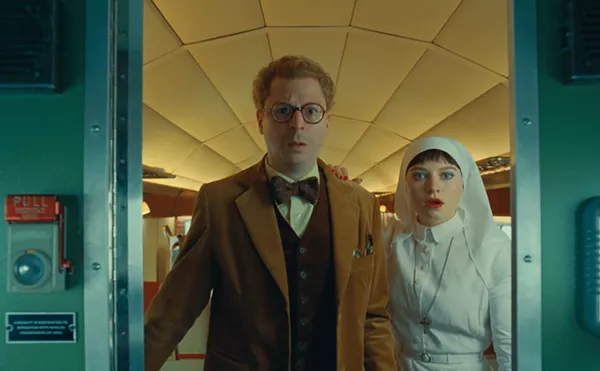Put aside your preconceptions about drawing when you approach "Tom Wesselmann Draws," now at the Museum of Art|Fort Lauderdale. The artist had his own distinct ideas about what constituted drawing, as he made clear in his introduction to this knockout retrospective, which includes more than a hundred works spanning four decades.
"The project interests me from another point of view in that I have made drawings in ways more adventurous than what many envision as a drawing show," wrote Wesselmann, who died in 2004 at age 73. "I see a show that will enlarge the common perception of what a drawing is to a surprising and rewarding degree."
This isn't typical artist-statement hyperbole. Wesselmann, a founding father of pop art, knew what he was up to, at least later in his career, and he articulated it with refreshing clarity and directness, both in words and in images. The exhibition indeed surprises and rewards. Wesselmann conceived the show with his wife, Claire, who ultimately curated it for New York's Haunch of Venison gallery, where it originated.
Fresh from Cincinnati in 1956 when he came to New York to study art at Cooper Union, Wesselmann was less sure of himself. He was just a kid in his mid-20s who had fulfilled his Army service, completed college (majoring in psychology), and dabbled in cartoons.
Within a couple of years, he had married friend and model Claire Selley and settled on painting as his path. In 1961, he embarked on the series for which he is best-known, "The Great American Nude," which, along with his "Bedroom Painting" and "Still Life" series, is well represented here.
"I drew more in the Sixties than in the Seventies as I was searching for myself in my art," Wesselmann continued in the exhibition's introduction. "The Sixties, for me, was a decade of intense exploration in many directions." In the decades to come, he largely followed through on the momentum he built up in the '60s. In those early days, despite describing himself as "inexperienced and totally new to art... and very naïve," he goes on to say, "I totally trusted my eye and my hand. As a consequence, I did a number of drawings that were confident and certain."
Some of those drawings are included in a small gallery to the left just as you enter the show. Among the more than 50 pieces displayed there are some early and midperiod nudes that are enormously satisfying. This is contrary to Wesselmann's own assertion that he almost always disliked drawing nudes because "the woman's beauty invariably was impossible to match."
Strange words coming from a man who went on devote such a large portion of his career to chronicling the female nude. There may not be another artist for whom the female nipple, in particular, is so important. It appears again and again throughout Wesselmann's work, both in the drawings included here and in the paintings that sprang from them. It becomes, in effect, his signature.
Some of the surprises Wesselmann alluded to come in the form of painted metal cutouts, which the artist acknowledged as his greatest departure. Somewhere along the line, he hit upon the idea of using metal forms to capture the process of drawing, as if he were literally drawing in steel and aluminum. He cites the computer-based laser technology that eventually made it easier for him to realize his intentions, but at the beginning, it must have been quite challenging to re-create drawing in cold, hard metal.
This all may sound considerably clunkier than it turns out to be. The late-'80s Still Life With Fruit and Goldfish (3-D), early in the show, only hints at the amazing effects Wesselmann was to achieve later. By the time the exhibit gets to some of the more intricate cutouts, I was jotting in my notes, "It really is like drawing with metal."
And by the time I got to Beach at Easthampton Looking South III, from 1989, I was awestruck. This audacious steel cutout painted with enamel uses dramatically sprawling metal lines to capture the breadth and depth of a landscape, and to my mind, it's one of the best pieces in the exhibition, a revelatory look at Wesselmann at the height of his creative powers.
That's not to say there aren't other rewards. I was especially taken with the handful of works in which Wesselmann both tweaks and pays homage to other artists by incorporating elements from their styles into his own. Among the influences he references are Matisse, Cezanne, and Lichtenstein.
As for Wesselmann's contributions to other artists and the culture at large, I challenge you to come away from "Tom Wesselmann Draws" without a greater appreciation of the artist's influence. Indeed, it's hardly a stretch to wonder if pop art would have had the impact it did without Wesselmann.
One of my favorite tidbits that suggests Wesselmann's lingering influence dates back to 1963, when he made the charcoal-on-paper Drawing for Mouth #3. I can't imagine the iconic, ubiquitous Rolling Stones' mouth-and-lips logo, designed in 1970 by John Pasche, being possible without Wesselmann's precedent. How's that for lasting impact?







